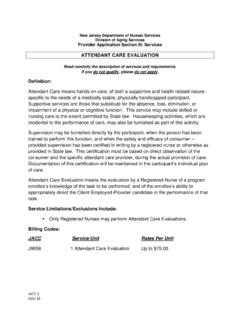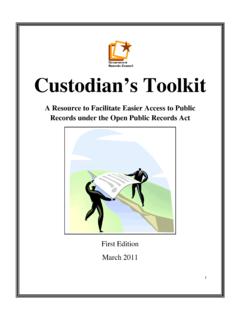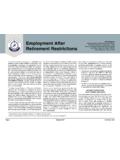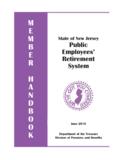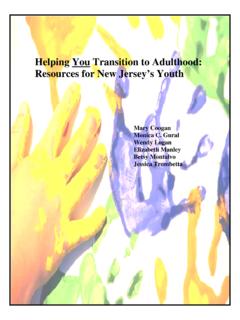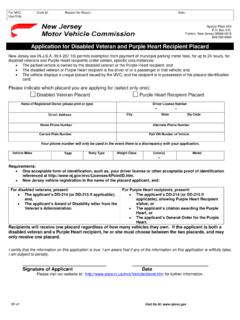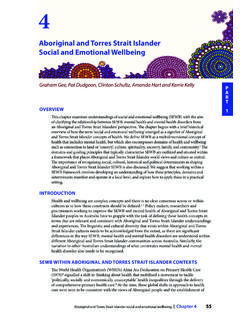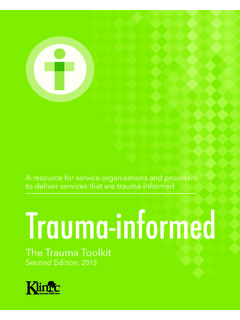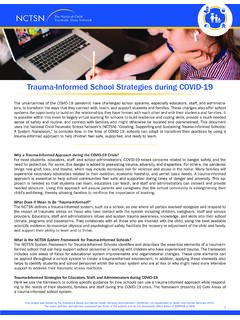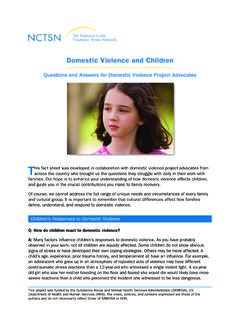Transcription of NJ ACES STATEWIDE ACTION PLAN
1 NJ ACESSTATEWIDE ACTION PLANNJ ACEs STATEWIDE ACTION plan i FOREWORDF oreword Thank you for taking the time to learn more about adverse childhood experiences (ACEs) and New Jersey s ACEs ACTION plan to achieve resilience . This ACTION plan was created in partnership with the New Jersey ACEs Collaborative The New Jersey Department of Children and Families (DCF), the Burke Foundation, The Nicholson Foundation, and the Turrell Fund and the Center for Health Care Strategies.
2 Most importantly, it is centered on and propelled by the community of people most impacted by ACEs throughout the Garden State. If you are not yet familiar with the terminology or concept, ACEs are traumatic events known and unknown that negatively impact the developing brain in such a way that they can cause lifelong even generational emotional, physical, and economic health challenges. Poverty, mental illness, social maladjustment, and poor health are just some examples of the effects. But, what we ve learned through research is that ACEs can be neutralized by positive experiences and loving relationships, and that with compassionate, nurturing support, people can achieve resilience the process of adapting and overcoming in the face of adversity.
3 As we become more mindful about ACEs through our work, we can facilitate healing and give children a chance at a better future. That s why the DCF Office of resilience was created and it s why I m here. I have lived experience in trauma . I have five adult children, 19 grandchildren and one great grandchild. My wife and I are both former foster parents. We have adopted a child out of the system, and we have placed a biological child into the system for adoption. I am a Black man who is old enough to remember living under Jim Crow.
4 I spent 25 years working in corrections for the State of Minnesota. A lot has happened to me, but a lot has also happened for me. About seven or eight years ago I was at a conference in San Diego. I sat in on a session I had not initially expected to attend, led by Dr. Vincent Felitti, who was talking about the implications of trauma . He is one of the co-principal investigators of the Adverse Childhood Experiences study. He was talking in such detail about consequences and outcomes that I thought he was telling my life story.
5 I felt heard and seen, and at the close of the session I had to introduce myself and learn more about his research and findings. What I discovered is that almost everyone has grown up with trauma , whether it s bullying, racism, isolation, abuse, violence, addiction or mental illness in the home, or separation of or from parent figures. It s hard to live in this country and not be exposed to trauma . In fact, we are a country founded in trauma . Dr. Felitti had me hooked. He sent me anything and everything he could around the Adverse Childhood Experiences study.
6 Long story short, I am one of 25 people who were originally trained in the ACE Interface curriculum, and now, here I am in New Jersey helping to advance one of the most forward-thinking initiatives in the country in service and support of connecting people to their own stores of resilience . Adding to our individual and collective trauma , the past year has challenged all of us in ways we never expected to be tested some good, some bad. The surging of the racial justice movement has sparked a national conversation around the need to end racialized violence, institutionalized racism, and white supremacy.
7 While this can have a positive effect on ACEs, it has come at a dear cost, particularly for Black, Brown, and Native people in America who have long suffered historical and intergenerational trauma . Against the backdrop of this rallying cry for racial justice is the FOREWORDNJ ACEs STATEWIDE ACTION plan ii FOREWORD ongoing devastation caused by the COVID-19 pandemic. Even beyond the unconscionable loss of life, so many of us find ourselves isolated from critical supports, like family, friends, teachers, and health care providers.
8 It is hard to predict how deeply we will each be affected by these concurrent crises. But, by making New Jerseyans aware and empowered to address ACEs, we can strive to heal from the past year, and then some. The key elements to implementing New Jersey s ACEs ACTION plan include: (1) gathering information about current efforts to address ACEs in the state; (2) meeting with non-governmental organizations to let them lead our work; (3) expanding leadership to include communities directly impacted by ACEs into the design process; (4) collecting data on the project so people can engage with it.
9 And (5) letting community members know that an online community is available for them to share their own contributions to and opinions on the ongoing work. Our goals under this ACTION plan are to: (1) help children and families in New Jersey reach their full potential by growing and developing in relationships that are safe, healthy, and protective; (2) reduce ACE scores in future generations; (3) develop and resource programs and services based on what we learn, rather than focusing on rigid metrics of success or failure; and (4) look at solutions based on community input that address root causes rather than symptoms.
10 This vision is reflected in Powerful Families, Powerful Communities, an initiative being developed by the DCF that aspires to eliminate the need for foster care by creating the conditions in families and in communities to ensure children are safe and thriving with their families. The project, which will begin with a human-centered, community co-design process, will seek to re-design the services offered by child welfare. To the readers of this ACTION plan , I say Sawubona. It is a common greeting among the tribes in South Africa and it literally means I see you; I respect and acknowledge you.
